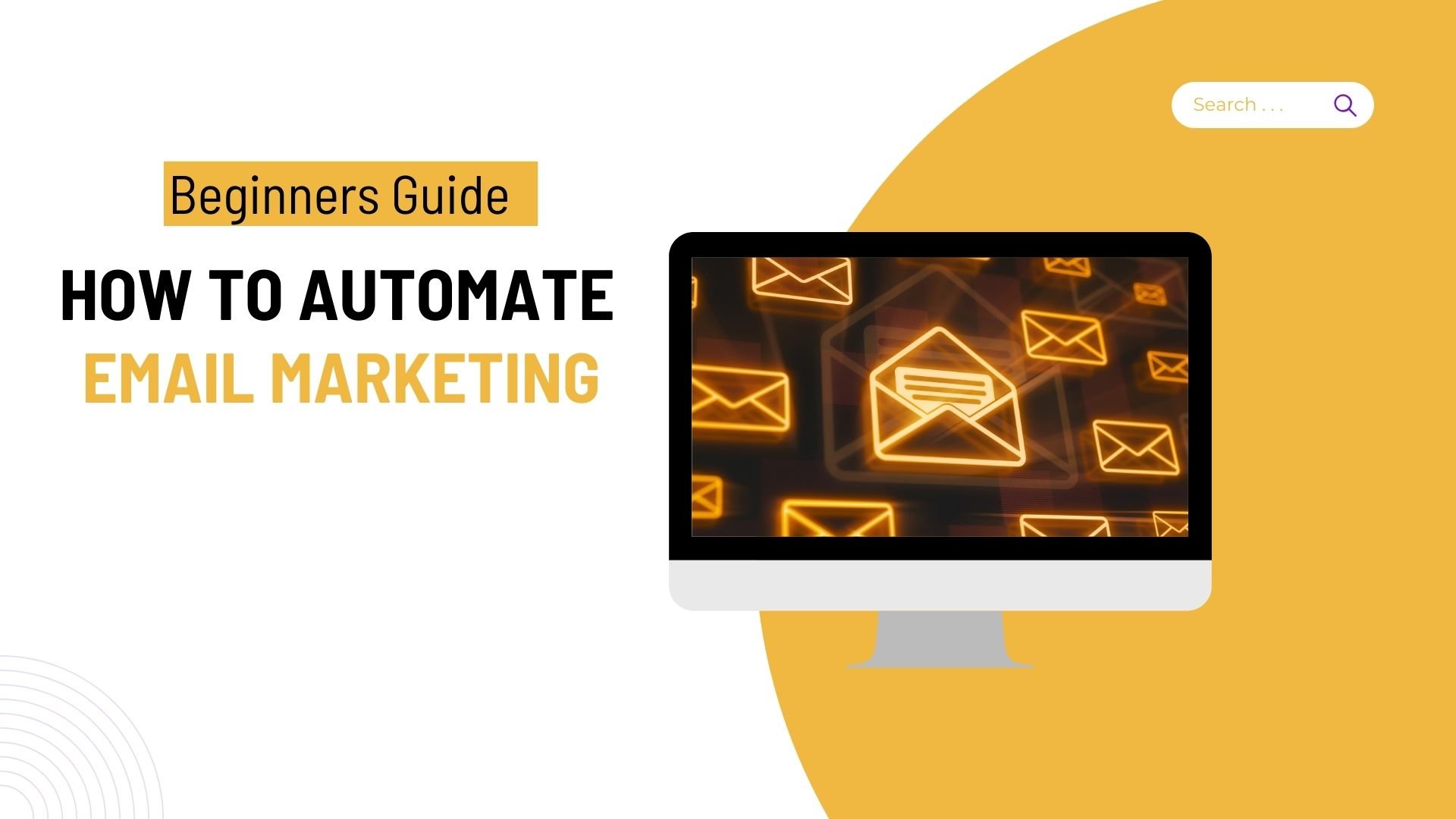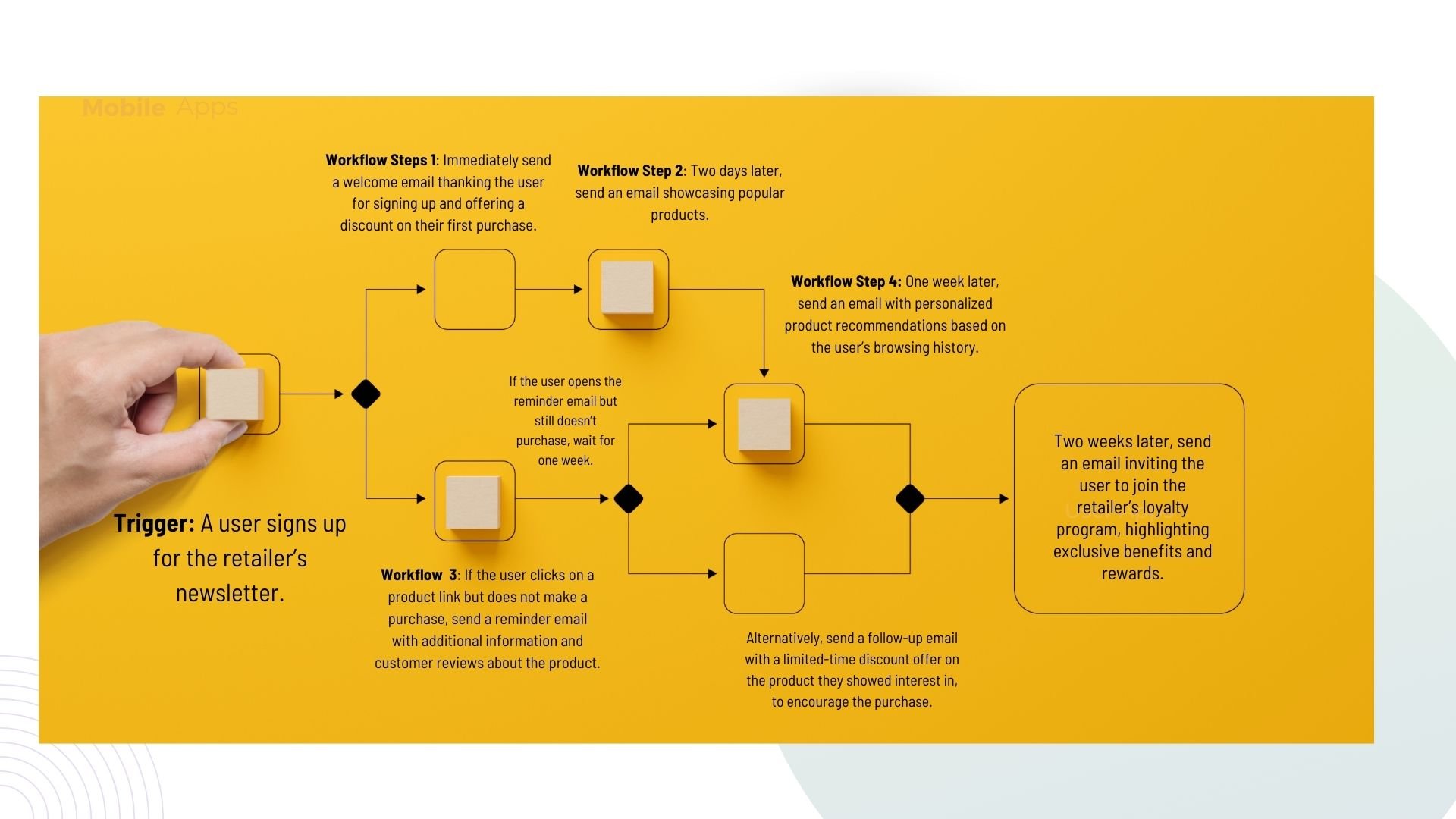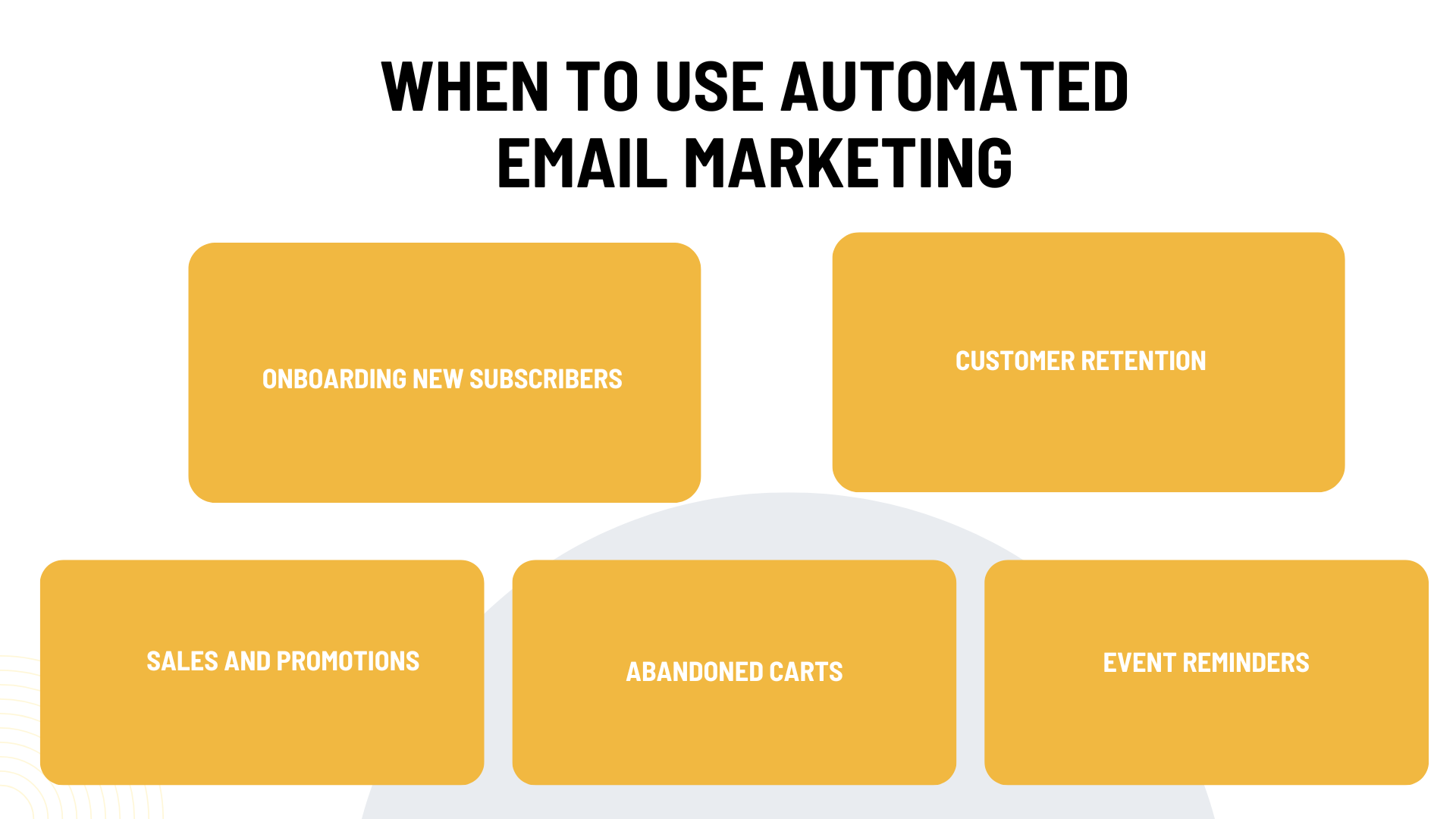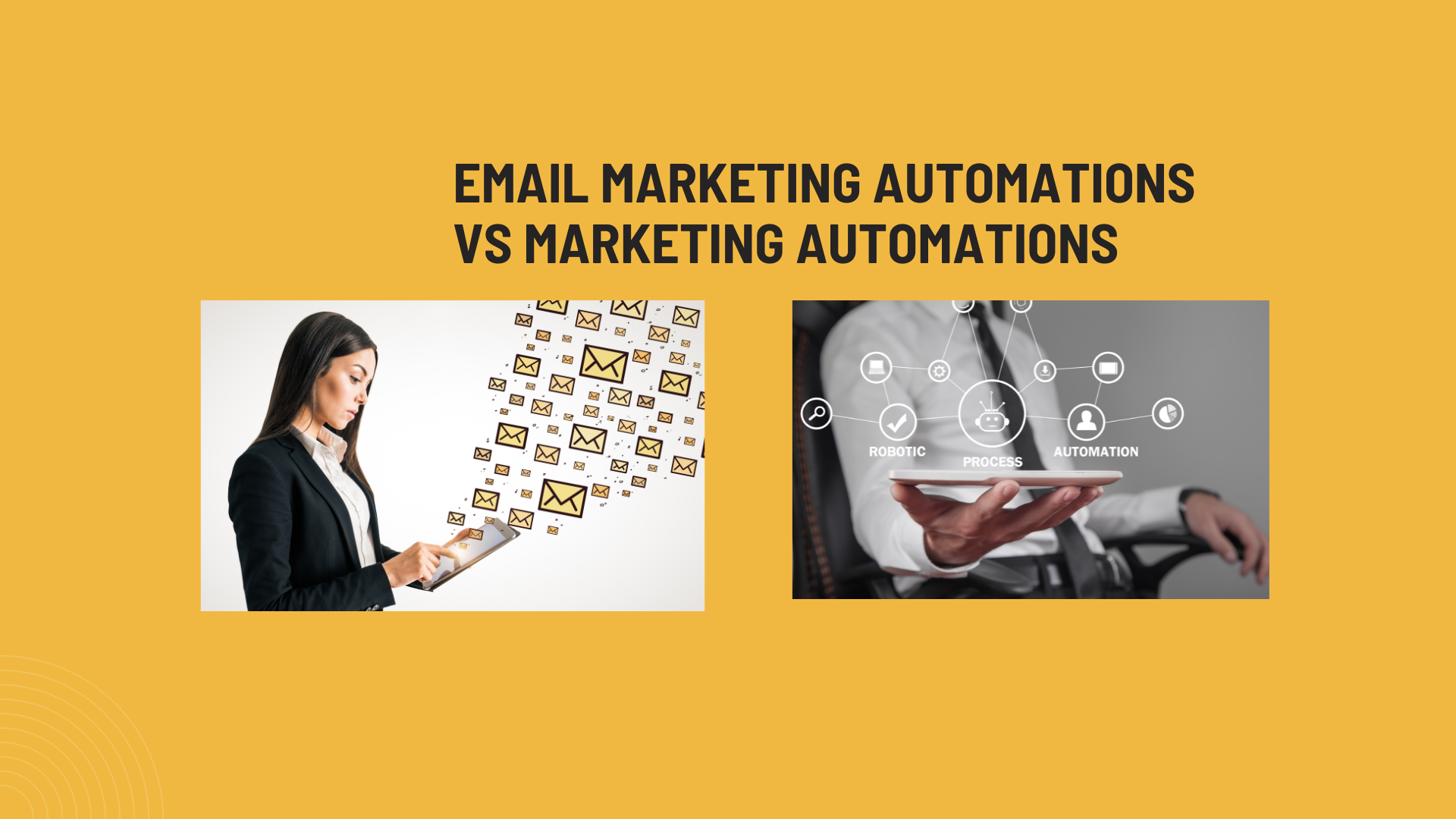How To Automate Email Marketing? The Beginner's Guide
Are you struggling to keep up with your email marketing tasks?
Do you wish there was an easier way to manage your campaigns and ensure they reach the right audience at the right time?
If so, this guide on email marketing automation is for you.
Definition of Email Automation
Email automation is the technology that allows marketers to set up workflows that automatically send emails to subscribers based on their behavior, preferences, and other criteria.
It involves the use of specialized email marketing platforms or tools to manage and execute these automated tasks.
What Is Automation in Email Marketing?
In email marketing, automation means setting up emails to be sent automatically based on specific actions or events.
These actions can include a new subscriber joining your mailing list, a customer making a purchase, or a user abandoning their shopping cart.
The aim is to deliver the right message to the right person at the right time, enhancing engagement and conversion rates.
Related: What is Marketing Automation and How Does It Work
How Does Email Marketing Automation Work?
Email marketing automation works by using triggers and workflows to send relevant emails at the right time. Here's how the process breaks down:
Trigger. A trigger is an action or event that starts the automated email process. This could be something like signing up for a newsletter, making a purchase, or clicking a link in a previous email. Triggers ensure that emails are sent based on specific subscriber behaviors, making the communication timely and relevant.
Workflow. Once a trigger is activated, a workflow is set into motion. A workflow is a series of predefined steps that determine what emails are sent, in what order, and at what times. Workflows can include various elements such as:
Email Marketing Platform. An email marketing platform is the software that manages and executes these automated workflows. It tracks user behavior, such as opens, clicks, and purchases, and uses this data to trigger emails and adjust workflows in real time.
Example: An Online Retailer’s Workflow
When a user signs up, we start with a welcome email offering a first-purchase discount.
Two days later, we send a curated list of popular products.
If they click on a product but don’t buy, we follow up with more details and customer reviews.
If they still haven’t purchased after this, we wait one week and then either suggest other products based on their browsing history or offer a special discount on the product they showed interest in.
Two weeks later, we invite them to join our loyalty program for exclusive benefits.
Why Should You Use Email Marketing Automation?
Efficiency. Automating repetitive tasks saves time and resources, allowing your team to focus on strategic initiatives. According to a survey by Adestra, marketers who use automation save an average of 6.4 hours per week.
Personalization. Automated emails can be tailored to individual subscribers based on their behavior and preferences, increasing engagement and conversion rates. Experian reports that personalized emails deliver six times higher transaction rates.
Scalability. Automation allows you to manage your email marketing efforts effectively, regardless of the size of your subscriber list.
Consistency. Automated workflows ensure your audience receives consistent communication, building trust and loyalty.
Improved Metrics. Automated emails typically have higher open and click-through rates, providing better insights into your audience’s behavior and preferences.
When to Use Automated Email Marketing
Automated email marketing can be used in various scenarios to enhance customer engagement and drive sales.
Onboarding New Subscribers. Send a welcome email to new subscribers to introduce your brand and set expectations.
Customer Retention. Use automated emails to re-engage inactive subscribers or reward loyal customers.
Sales and Promotions. Automate promotional emails to coincide with special offers, discounts, or seasonal sales.
Abandoned Carts. Recover lost sales by sending automated reminders to customers who left items in their shopping carts.
Event Reminders. Notify subscribers about upcoming events, webinars, or product launches.
How to Set Up Email Marketing Automation
Setting up email marketing automation involves several key steps:
Choose an Email Marketing Platform. Select a platform that supports automation and fits your needs. Popular options include Mailchimp, HubSpot, and ActiveCampaign.
Define Your Goals. Determine what you want to achieve with your automated emails, such as increasing sales, improving engagement, or building brand loyalty.
Segment Your Audience. Divide your email list into segments based on demographics, behavior, or preferences to ensure targeted communication.
Create Email Templates. Design email templates for different types of automated emails, such as welcome emails, abandoned cart reminders, and promotional messages.
Set Up Triggers and Workflows. Define the triggers that will initiate your automated emails and create workflows that outline the sequence and timing of emails.
Test Your Automation. Before launching, test your automated emails to ensure they work as expected and make any necessary adjustments.
Monitor and Optimize. Use analytics provided by your email marketing platform to track the performance of your automated emails and optimize them for better results.
Benefits of Email Marketing Automation
Email marketing automation offers several benefits.
Time-Saving. Automating repetitive tasks frees up your time, allowing you to focus on other important aspects of your business.
Increased Engagement. Automated emails tend to have higher open and click-through rates due to their relevance and timeliness.
Enhanced Personalization. With automation, you can tailor your emails to individual subscribers based on their behavior and preferences.
Improved Conversion Rates. Automated emails can guide subscribers through the customer journey, increasing the likelihood of conversions.
Better ROI. By targeting the right audience with relevant messages, email automation can deliver a higher return on investment.
10 Automated Email Marketing Tools
Choosing the right email marketing tool is crucial for successful automation. Here are ten popular email marketing platforms that offer robust automation features.
Mailchimp: Known for its user-friendly interface and comprehensive automation features.
HubSpot: Offers advanced automation capabilities, CRM integration, and detailed analytics.
ActiveCampaign: Combines email marketing, automation, and CRM tools to help manage customer relationships effectively.
Brevo: Provides powerful automation features, including transactional emails and SMS marketing.
GetResponse: Offers a range of automation tools, including advanced segmentation, A/B testing, and landing pages.
Klaviyo: Designed for e-commerce businesses, offering personalized email automation and robust analytics.
Drip: Focuses on e-commerce automation with personalized workflows and detailed customer insights.
AWeber: Known for its ease of use and comprehensive automation features, suitable for small to medium-sized businesses.
ConvertKit: Ideal for creators and bloggers, offering simple yet powerful automation tools and integrations.
Moosend: Provides advanced automation workflows, detailed reporting, and a user-friendly interface at an affordable price. For more details on marketing automation tools, you can check out this comprehensive guide on marketing automation platforms.
Types of Marketing Automated Emails
Automated emails can take various forms, each serving a specific purpose in your marketing strategy. Here are some common types.
Automated Welcome Email
A welcome email is the first impression you make on a new subscriber. Automated welcome emails are triggered when someone signs up for your mailing list. They typically include a warm greeting, an introduction to your brand, and a call to action.
According to Experian, welcome emails have an open rate of 57.8%, which is significantly higher than standard promotional emails.
Abandoned Cart Automated Emails
Abandoned cart emails are sent to customers who add items to their shopping cart but leave without completing the purchase. These emails serve as a reminder and often include incentives like discounts or free shipping to encourage the customer to return and complete their purchase.
Abandoned cart emails have an average open rate of 45% and a conversion rate of 10.7% (Moosend).
Related: How to craft an effective abandoned cart emails
Newsletters
Newsletters are regular updates sent to your subscribers, typically on a weekly or monthly basis. Automated newsletters can include curated content, company news, product updates, and special offers. They help keep your audience engaged and informed.
The average open rate for newsletters across industries is 21.33%, according to Mailchimp.
Examples of Email Marketing Automation Campaigns
Welcome Series
A welcome series is a sequence of emails sent to new subscribers over a period of days or weeks. This series can include a welcome message, an introduction to your products or services, and an offer to encourage the first purchase.
Example: A clothing retailer could send a welcome email with a discount code, followed by emails showcasing popular products and style tips.
Re-engagement Campaign
Target inactive subscribers with a series of emails designed to re-engage them. This can include asking for feedback, offering a special discount, or showcasing new products.
Example: An online bookstore might send emails highlighting new releases or offering a discount on a subscriber's favorite genre to re-engage inactive customers.
Product Recommendations
Use customer data to send personalized product recommendations based on previous purchases or browsing behavior.
Example: An e-commerce site selling electronics could send recommendations for accessories or complementary products to customers who recently purchased a smartphone.
Event Reminders
Send automated reminders leading up to an event, such as a webinar or product launch, to ensure maximum attendance.
Example: A software company could send a series of reminder emails with details about an upcoming webinar, including the agenda and how to join.
Post-Purchase Follow-Up
After a customer makes a purchase, send a series of emails to thank them, provide additional product information, and encourage reviews or referrals.
Example: A beauty brand might follow up with tips on using a newly purchased skincare product, along with a request for a review and a referral discount.
Related: Mastering Marketing Automation in Email Campaigns
Email Marketing Automations vs. Marketing Automations
Email marketing automation focuses on automating email-related tasks. It handles things like sending welcome emails, reminders for abandoned carts, and newsletters based on user actions. This helps businesses improve their email communication and keep subscribers engaged.
In contrast, marketing automation covers a wider range of activities beyond just emails. It includes managing social media posts, content, and customer relationships. Marketing automation tools help run and analyze campaigns across different channels, offering a complete approach to engaging and nurturing leads.
Simply put, while email marketing automation deals only with emails, marketing automation handles multiple marketing tasks to make everything run more smoothly.
Final Thoughts
Email marketing automation is a powerful tool that can save you time, increase engagement, and drive conversions.
By understanding the basics of automation, choosing the right email marketing automation tools, and implementing effective campaigns, you can significantly enhance your email marketing efforts.
Whether you’re just starting out or looking to optimize your current strategy, this guide provides a comprehensive overview to help you get started with email marketing automation.














